Alyssa Koehler, Extension Field Crops Pathologist; akoehler@udel.edu
The Usual Suspects
Grey Leaf Spot
Consistently our most common disease of corn, GLS has been becoming more noticeable over the past week with the end of week/weekend rain and humid weather. GLS usually begins on lower leaves as small, tan, rectangular lesions with a yellow halo. When lesions are young, they can be difficult to distinguish from other common corn foliar diseases. As lesions mature, they become more diagnostic. At maturity, lesions are grey to tan in color, with a long rectangular shape (Figure 1); partially resistant hybrids can have more jagged margins than lesions on susceptible cultivars. Lesions often join to form large necrotic areas under favorable environmental conditions.
Yield reductions are typically observed when lesions are present on the two leaves below the ear leaf or higher, so these are the leaves to pay close attention to when scouting. If over 50% of plants have lesions on 5% or more of this leaf surface, you may want to consider a fungicide application. If applying a fungicide, VT/R1 timing has shown the greatest chance of economic return. We have been busy with our VT/R1 fungicide trial applications this week and last week. Results from these trials will be shared at the end of the season. Results from 2020 can be found in the 10.16.20 WCU article, 2020 Corn Foliar Fungicide Efficacy Trials.
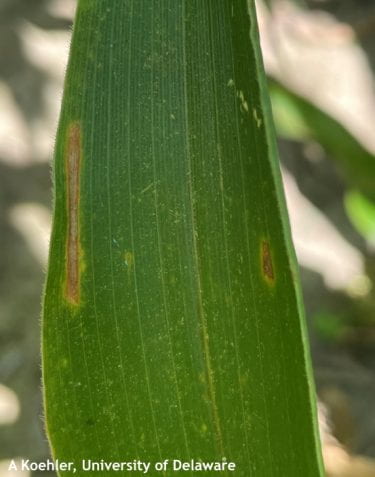
Figure 1. Corn leaf with grey leaf spot lesions
Northern Corn Leaf Blight
It has been a few years since NCLB was widespread in the area, but I usually find a few lesions from this disease around each season. Like many fungal diseases, NCLB is favored by wet weather, heavy dew, or overcast conditions. The oblong lesions are somewhat cigar shaped, typically ranging from 1-7 inches in length (Figure 2).
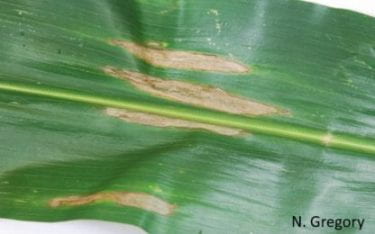
Figure 2. Corn leaf with northern corn leaf blight symptoms
Reside-borne leaf diseases like Grey Leaf Spot and Northern Corn Leaf Blight become common in no till and especially corn on corn irrigated production. It is possible to select hybrids with good/excellent resistance to these diseases, which will reduce the amount of foliar disease observed. Resistant hybrids typically have smaller lesions and reduced spread of spores.
Diseases Emerging in the Area
Diplodia Leaf Streak
In recent years, especially in irrigated corn, I will see a few cases of Diplodia Leaf Streak. This disease is caused by the fungus Stenocarpella macrospora. Stenocarpella maydis is also present in the region and can cause Diplodia Ear & Stalk rot later in the season; we will discuss this disease in a future article. Lesions of Diplodia Leaf Streak can look very similar to Northern Corn Leaf Blight, but the difference is that inside of the lesions, you will see black fungal fruiting structures called pycnidia; these are not present in lesions from Northern Corn Leaf Blight (Figure 3). Diplodia leaf streak has oval to elongated, brown lesions with yellow margins and these can expand into long streaks (Figure 4). Currently, this disease is not reported to cause yield loss and management is not often necessary.
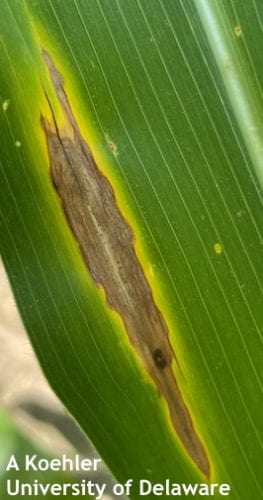
Figure 3. Corn leaf with Diplodia Leaf Streak, note black structures in the center of the lesion
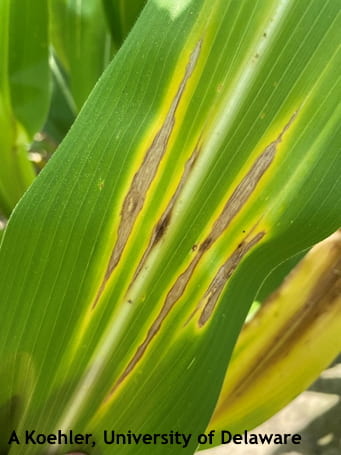
Figure 4. Diplodia leaf streak lesions that have expanded into long streaks
Curvularia Leaf Spot
Towards the end of the 2020 growing season, I began observing lesions in the upper canopy that resembled young grey leaf spot lesions, but when the leaf was flipped over and held up to the light, a gray center, prominent margin, and yellow halo were observed (Figure 5). Under the microscope, we observed crescent shaped spores characteristic of the pathogen that causes Curvularia leaf spot. We molecularly confirmed that the organism we were working with was Curvularia lunata. The range of Curvularia leaf spot in the US has been expanding in recent years. While there have not been any reports of extreme yield loss from Curvularia in the US, the impact of this disease is not yet fully understood. Curvularia leaf spot starts as small tan lesions. These lesions have a brown/maroon border often surrounded by a yellow halo that is particularly noticeable with back lighting. Symptoms can be observed at any growth stage, but I did not start observing this disease until R4/R5 last year. Now that it is in the region, we will continue to keep an eye on this disease for the 2021 growing season. Care should be taken to not confuse these lesions with young grey leaf spot. Data from other states has shown fungicides to lack efficacy for Curvularia leaf spot and there are not currently any fungicides that list Curvularia on their label. Excessive dew and sporadic rainfall favor the development of this disease.

Figure 5: Corn leaves with grey leaf spot and Curvularia leaf spot. Left image top side of leaf, right image underside backlit with sun.
A New Corn Disease to Look Out For
Tar Spot
To begin, this disease has not been found in Delaware or Maryland to date; however, it was observed in PA last year and is one we want to keep an eye on for spread into DE/MD. Tar spot is a fungal disease that was first discovered in the US in Indiana during the 2015 growing season. While there is a complex of organisms involved in Latin America, to date Phyllachora maydis has been the only organism involved in the US. Over the past seasons, tar spot has been spreading across the corn belt and it was confirmed in Lancaster County, PA in 2020 (Figure 6). Symptoms of tar spot are raised lesions with glossy black coloring that look like paint or tar is present on the leaf (Figure 7). Symptoms typically occur VT through maturity. Again, this disease has not yet been reported or found in DE or MD, but keep it in mind as you scout fields this season. Please contact Alyssa Koehler (akoehler@udel.edu) if you suspect you found this disease and we will work with you to confirm identification.
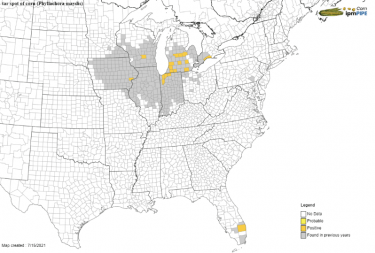
Figure 6: Map of tar spot in the US as of 7.15.21. Map generated from: http://corn.ipmpipe.org/tarspot/.
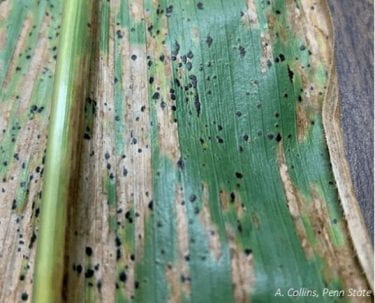
Figure 7: Tar spot symptoms on a corn leaf
